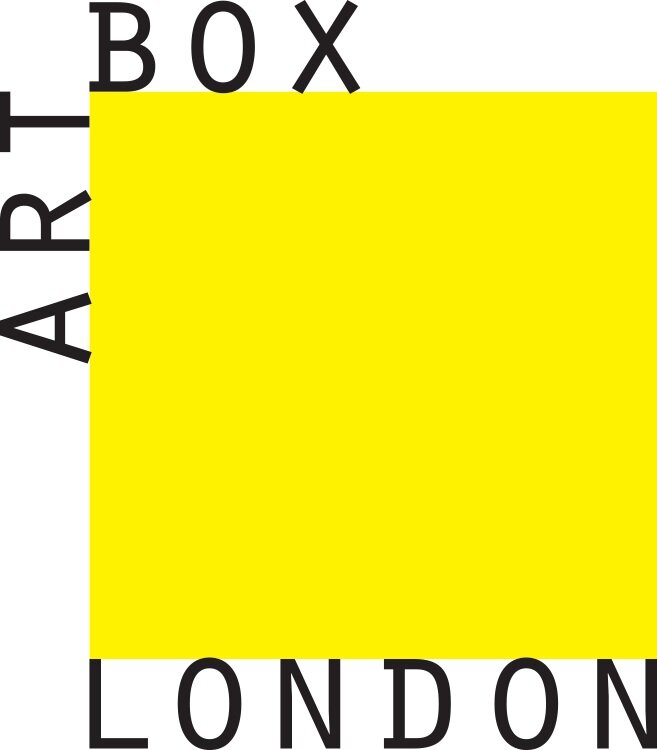Artist Spotlight: Emma
Many fine artists take years to find their signature style and yet, since coming to Artbox, Emma has consistently generated artworks that are entirely her own. Her favourite medium is soft pastel which she combines with charcoal, watercolour, and Bosco pens to produce lush, almost windswept scenes. Often inspired by artworks of the nineteenth and early twentieth centuries, especially the impressionists and post impressionists, she has rapidly built a vast portfolio; she is known in Artbox for her lively abstracted landscapes and, in particular, for her portraits of stately women and the regal worlds that surround them.
Emma, Untitled, 2022, watercolour and soft pastel, A2
The above painting, which features a figure in pale blue and lilac, swaddled in her cloth and surrounded by flowers and pot-plants, is characteristic of Emma’s style. Emma has chosen to abstract and simplify shapes; her chair becomes a patchwork of squares and rectangles, whilst the leaves of a tree become a flurry of swirls and imperfect circles (even when her scenes are interior, she often includes a gesture to the outside world in the form of a tree or vase of flowers). The dominance of circles and squares in Emma’s work creates the sense of internal structure and geometry. It also gives it a playful quality, as if the delicate figure has somehow been carefully crafted from blocks of Duplo.
Although it is entirely coincidental, Emma’s painting above is reminiscent in composition, and in mood, of the oil painting “The Seamstress”, by the Finnish artist Helene Schjerfbeck. In both paintings, the subject is seated alone, in a mood of quiet contemplation. Emma consistently expresses an interest in nineteenth and early twentieth century paintings because of the history they represent, and the contrast between the freedoms that women have access to in the present, versus their experiences in the past. She also mentions some of her favourite films, which include an adaptation of Daphne Du Maurier’s 1938 novel Rebecca, as well as the 1995 film The Little Princess. Incidentally, both are period dramas about female figures who are trapped/ constrained by those around them. She likes to paint women, she says, “to give them another life.”
Helene Schjerfbeck, The Seamstress, 1905, oil on canvas (The Finnish National Gallery, Helsinki).
Process
In the studio, Emma is extremely focused and driven. She leafs through books from the library, seeking out images that spark her imagination. When she finds a reference image(s) that fits the bill, she sketches it out on a large piece of paper, using broad, rounded strokes. She then coats the page in soft pastels, oil pastels or watercolour, in pinks and reds, greens and browns. In some of her works, charcoal is used to deepen the lines. Currently, she says, soft pastels are her favourite medium – “they’re not messy and they do the job!”
Emma, Untitled, 2022, watercolour and charcoal, A2.
Some of her works, for example the painting above, appear almost spiritual, as if the subject is an icon or an object of devotion. This effect is achieved through the combination of the singular focus on the woman in the centre of the page and the pedestal which the artist has given her. The viewer is uncertain whether the woman is a human or indeed a sculpture. Contributing to this other-worldly appearance is the breadth of the back of the chair (or throne) on which the woman is seated, this gives the impression of angel wings. As you can see from the painting, Emma is not afraid of letting the white of the paper show through and the French impressionists were also fond of this. This creates the sense of light, as if the watercolour is backlit, which, in turn adds to the “iconic” feeling of the painting.
Since the beginning of the year, Emma has been creating alongside one of our volunteers, Ellie, who is also a student of Fine Art. Together, they have been experimenting with making complex textures in watercolour. We get a strong sense of this in the painting to the below. Again, Emma has positioned the figure on a pedestal, giving the viewer the impression of a regal female. But here, the use of a florid, rounded pattern on her dress and surroundings, gives the woman an increased sense of solidity and weight, as well as helping to guide the eye of the viewer around the painting. As with so many of Emma’s works, here is a piece which you can get lost just looking at. We all look forward to seeing what she creates next.
Emma, Untitled, 2022, watercolour and charcoal, A2.
Volunteering at Artbox
We’re currently looking for more volunteers to join our studio sessions and support artists like Emma to create their wonderful pieces. If you or someone you know is interested and commit to more than 3 months, please apply here:




